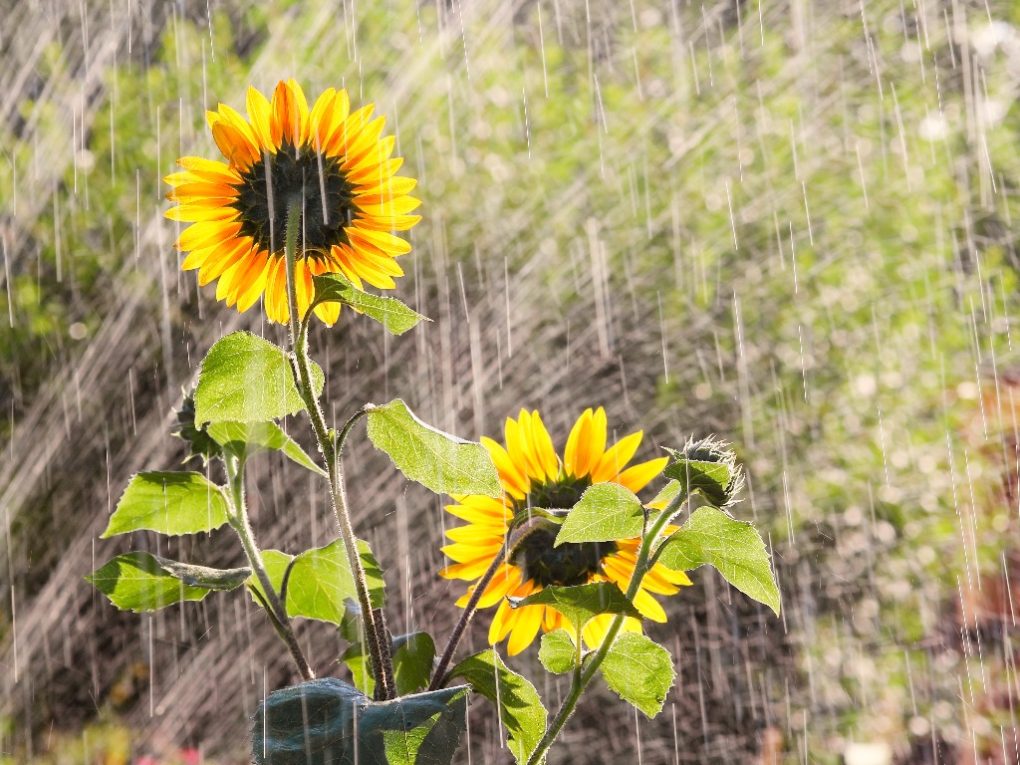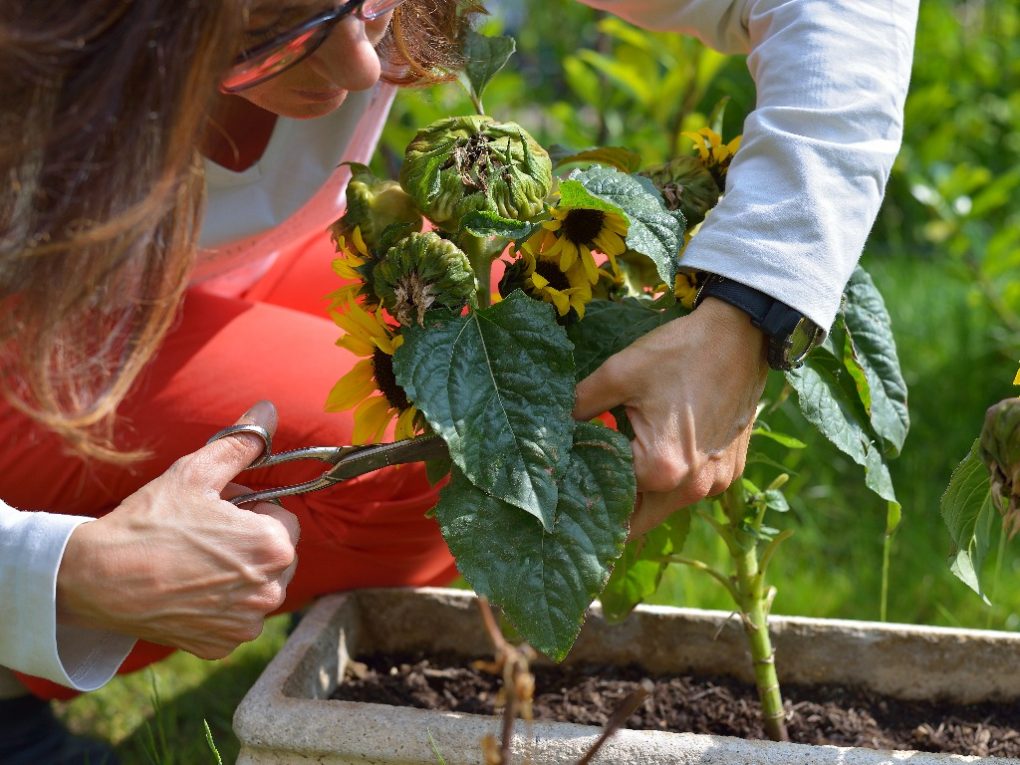Where Do Sunflowers Grow: What You Need to Know When Planting Sunflowers
Sunflowers are native to North and South America, but they are now widely cultivated around the world. They can be grown in various climates, from temperate to tropical regions, and they are adaptable to various soil types. In North America, sunflowers are commonly grown in the Great Plains region of the United States, which includes parts of Texas, Oklahoma, Kansas, Nebraska, South Dakota, North Dakota, and Montana.

Table of Contents
Tips When Planting and Growing Sunflower
Choose a Sunny Location
Sunflowers require full sun to grow and thrive, so choosing a location in your garden with plenty of sunlight is important. Look for a spot that receives at least 6-8 hours of direct sunlight daily, and avoid planting in shaded areas or spots frequently shaded by trees or buildings.
If you are planting sunflowers in a location that gets less than 6 hours of direct sunlight per day, you may still be able to grow them, but they may not reach their full potential. In this case, consider planting smaller or dwarf varieties of sunflowers, which may be more tolerant of partial shade.
It is also important to consider the orientation of your garden and the sun’s angle during different times of the day. Sunflowers typically face east during the morning and then gradually turn west as the day goes on, so you can plant them in a location that takes advantage of this movement to maximize their exposure to sunlight.
Prepare the Soil
Preparing the soil is an important step when planting sunflowers, as it can significantly impact the growth and health of your plants. Here are some tips for preparing the soil:
- Loosen the soil: Sunflowers grow best in loose, well-draining soil, according to HGTV, so use a garden fork or tiller to loosen the soil to a depth of at least 12 inches.
- Remove weeds and debris: Clear the area of weeds, rocks, and other debris that can interfere with plant growth.
- Amend the soil: Sunflowers grow best in soil rich in organic matter, so consider adding compost, well-rotted manure, or other organic amendments to improve soil fertility and structure.
- Test the soil: If you are still determining the quality of your soil, you may want to have it tested to determine its nutrient content and pH level. This can help you determine whether additional amendments are needed.
- Adjust soil pH: Sunflowers prefer soil between 6.0 and 7.5. If your soil is too acidic or alkaline, you may need to add lime or sulfur to adjust the pH level.
Plant at the Right Time
Planting sunflowers at the right time ensures they grow and develop properly. Here are some tips for planting sunflowers at the right time:
- Determine your planting zone: Sunflowers are annual plants and can be grown in most regions of the United States. However, the timing of planting will depend on your specific planting zone.
- Choose the right time of year: Sunflowers are typically planted in the spring or early summer, after the last frost date in your area. Planting too early can expose your plants to frost and cold weather conditions, while planting too late can reduce growth and yield.
- Consider your climate: If you live in a cooler climate, you may need to wait until late spring or early summer to plant sunflowers. You can plant earlier in the spring in a warmer climate.
- Watch the weather: Watch the weather forecast when planning to plant sunflowers. Planting during a period of heavy rain or prolonged drought can have negative impacts on growth and yield.
Plant the Seeds at the Right Depth
Planting sunflower seeds at the right depth is important for germination and growth. Here are some tips for planting sunflower seeds at the right depth:
- Determine the size of the seed: Sunflower seeds vary in size, so it is important to consider the size of the seed when determining the planting depth.
- Plant larger seeds deeper: Larger sunflower seeds should be planted deeper than smaller ones. A good rule of thumb is to plant seeds larger than 1 inch deep, while smaller seeds can be planted at a depth of ½ to 1 inch.
- Follow seed packet instructions: The seed packet should provide instructions on the recommended planting depth for your sunflower seeds.
- Water after planting: After planting the seeds, water the area lightly to help settle the soil and provide moisture for germination.
Water Regularly

Watering sunflowers regularly is essential for their growth and health. Here are some tips for watering sunflowers:
- Water deeply: Sunflowers have deep roots, so ensuring they reach the roots is important. A deep watering once a week is better than shallow watering every day.
- Avoid overwatering: While sunflowers need regular watering, overwatering can be harmful. Make sure the soil is moist but not soggy. Overwatering can lead to root rot and other issues.
- Water in the morning: Watering in the morning is the best time for sunflowers, as it allows the leaves to dry off during the day, which can help prevent fungal diseases.
- Mulch the soil: Mulching around the base of the sunflowers can help retain moisture in the soil and reduce the watering frequency.
Fertilize As Needed
Fertilizing sunflowers can help provide them with the necessary nutrients for healthy growth and maximum blooms. Here are some tips for fertilizing sunflowers:
- Test the soil: Before fertilizing sunflowers, test the soil to determine what nutrients it lacks. You can purchase a soil testing kit at a garden center or online.
- Choose the right fertilizer: Sunflowers benefit from a balanced fertilizer that contains equal parts of nitrogen, phosphorus, and potassium (N-P-K). Sunflowers are not known to prefer coffee grounds as a fertilizer, but they can benefit from their nutrient content. Coffee grounds are a good nitrogen source, an essential nutrient for plant growth. However, using coffee grounds on sunflower in moderation is important, as too much can cause the soil to become too acidic. You can purchase a balanced fertilizer at a garden center or online.
- Apply fertilizer at the right time: Sunflowers benefit from fertilizer at different stages of growth. Apply fertilizer before planting, when the plants are in the early growth stage, and when the plants are developing buds.
- Follow package instructions: Always follow the instructions on the fertilizer package for the correct amount to apply.
- Water after fertilizing: After applying fertilizer, water the sunflowers to help distribute the nutrients evenly in the soil.
Support Tall Varieties
Supporting tall varieties of sunflowers is important to prevent the plants from toppling over in windy or wet conditions. Here are some tips for supporting tall sunflowers:
- Install stakes: Install stakes around the sunflowers when small to avoid damaging the roots later. The stakes should be at least 6 feet tall, and you should drive them into the ground at least 2 feet deep.
- Tie the sunflowers to the stakes: As they grow, tie them to them using soft ties or twine. Tie the plants loosely, allowing some movement but preventing them from being blown over.
- Use cages: You can also use cages to support the sunflowers. Place the cages around the plants when they are still small and tie the stems to the cages as they grow.
- Trim the plants: If your sunflowers become too tall or heavy, you can trim them back to help prevent them from toppling over. Use pruning shears to trim the plants back by a few inches at a time.

Factors That Affect Blooming of Sunflowers
- Temperature: Sunflowers need warm temperatures to grow and bloom. If the temperature is too low, the plants may not grow as quickly, and it may take longer for the flowers to bloom.
- Day length: Sunflowers are photoperiodic, which means they respond to the length of daylight. They need a certain amount of daylight to trigger blooming. Generally, sunflowers require at least 12 to 14 hours of daylight to bloom.
- Soil quality: Sunflowers need well-draining soil that is rich in nutrients. Poor soil quality can slow down growth and affect blooming.
- Watering: Sunflowers need regular watering to grow and bloom. Over-watering can cause root rot, while under-watering can lead to slow growth and reduced blooming.
- Sun exposure: Sunflowers need full sun exposure to thrive. Lack of sunlight can cause stunted growth and reduced blooming.
- Planting time: The timing of planting can also affect blooming. If sunflowers are planted too early or too late in the season, they may need more time to grow and bloom before the weather changes.
